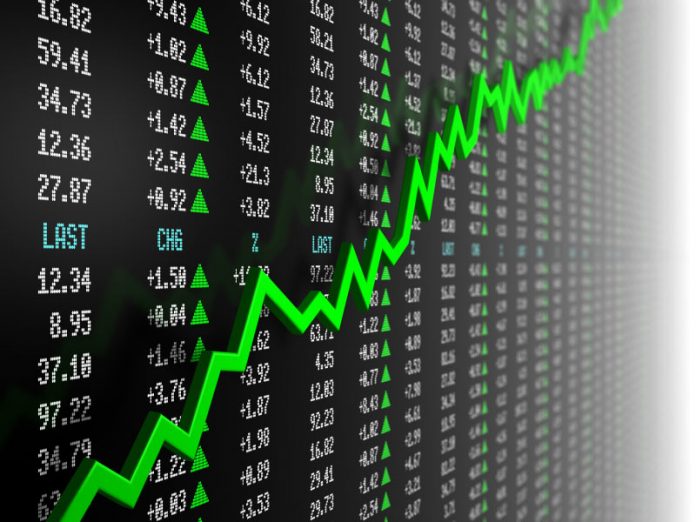WASHINGTON – The Federal Reserve raised interest rates Wednesday by half a percentage point and scaled back other pandemic-era economic supports, strengthening its efforts to fight the highest inflation in 40 years.
“The invasion of Ukraine by Russia is causing tremendous human and economic hardship. The implications for the U.S. economy are highly uncertain,” according to a statement released at the conclusion of the Fed’s two-day policy meeting. “The invasion and related events are creating additional upward pressure on inflation and are likely to weigh on economic activity. In addition, COVID-related lockdowns in China are likely to exacerbate supply chain disruptions.”
The Fed also announced it will start scaling back its nearly $9 trillion balance sheet in June, moving at a quicker pace than the last time the Fed shrank its portfolio, several years following the Great Recession.
At 2:30 p.m. Eastern time, Fed Chair Jerome H. Powell will answer questions on the economic outlook, inflation, the job market, and whether the Fed can manage to slow the economy without causing a recession. Global uncertainty also clouds the path ahead, as Russia’s invasion of Ukraine drives energy prices up, and covid shutdowns in China trigger a new wave of supply chain snarls.
The rate increase is the sharpest since 2000 and the second of seven hikes forecast for this year. Faced with soaring prices and a hot job market with record numbers of job openings, the Fed began raising rates in March, betting that a steady series of hikes will slash inflation, cool down the economy and get the coronavirus recovery on more sustainable footing.
The move makes an array of loans costlier for households and businesses, especially mortgage rates, which have already been inching up. Higher lending costs tend to cool down the economy, by weighing on business and consumer spending, and eventually lead to lower prices overall, especially for necessities such as housing, gas and groceries.
Much is at stake if the Fed’s plans go awry or if inflation becomes even more entrenched. The Fed must continue to pull back on its historic support for the economy – which began during the height of the pandemic shutdowns, when 20 million people lost jobs – by raising rates and winding down its vast balance sheet.
But policymakers must move slowly and not too forcefully, or rates could rise too quickly, prompt businesses to lay people off or send the country into recession.
“Our goal is to use our tools to get demand and supply back in sync so that inflation moves down,” Fed Chair Jerome H. Powell said at a panel hosted by the International Monetary Fund on April 21. “. . . I don’t think you’ll hear anyone at the Fed say that that’s
going to be straightforward or easy. It’s going to be very challenging.”
“Economies don’t work without price stability,” he said. “We need that to have a strong labor market for an extended period of time.”
In March, the Fed raised rates for the first time since slashing them to zero in the spring of 2020, opting for a more modest rate hike of a quarter percentage point. That month, inflation rose 8.5% compared with the year before.
Many Fed leaders have said they want to front-load more-aggressive hikes now and in the coming months, to make progress curbing inflation before it is too late. Markets and Fed watchers say it is likely that the Fed will opt for another half-percentage-point increase at the next policy meeting in June, and possibly again later this summer.
Inflation has been a scourge on an economy that appears strong by several other measures. The U.S. economy has added 1.7 million jobs this year. Consumer spending is strong, and wages are rising. The Biden administration often touts this progress as hard to fathom when the pandemic began.
However, higher costs for rent, clothing and utilities increasingly dominate how people are feeling about the economy and have made it harder for the Biden administration to rally support for its economic message. And even though inflation is the purview of the Fed, it has weighed heavily on President Biden’s approval ratings, even while the administration touts its own steps to lower gas prices and ease other inflationary pressures.
Republicans are hammering Democrats on the economy going into the 2022 midterms, arguing that sweeping stimulus spending from last year sent the economy into overdrive. Republicans also say the Fed waited too long to respond to inflation and hike rates.
Even as prices began to creep up last spring, Fed officials initially dismissed the increases as “transitory,” or temporary, and waited to start raising interest rates until mid-March, wary that any earlier intervention would slow progress in the labor market.
But that worry quickly reversed itself. The labor market has remained strong, with unemployment falling to 3.6% in March. The high demand for workers has brought about higher wages and more bargaining power. But the job market is so tight, employers across several industries are still dealing with worker shortages.
“It’s too hot. It’s unsustainably hot,” Powell said of the job market at the April IMF panel. “It’s our job to get it to a better place where supply and demand are closer together.”
Source: (c) 2022, The Washington Post · Rachel Siegel






